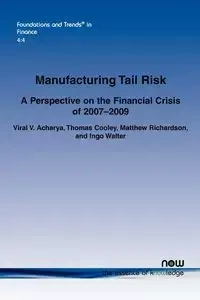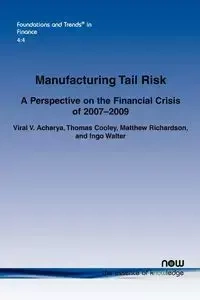Manufacturing Tail Risk - Acharya Viral V.
Manufacturing Tail Risk - Acharya Viral V.
- A Perspective on the Financial Crisis of 2007-09
AutorzyAcharya Viral V.
EAN: 9781601983404
Marka
Symbol
861FEX03527KS
Rok wydania
2010
Elementy
92
Oprawa
Miekka
Format
15.6x23.4cm
Język
angielski

Bez ryzyka
14 dni na łatwy zwrot

Szeroki asortyment
ponad milion pozycji

Niskie ceny i rabaty
nawet do 50% każdego dnia
Niepotwierdzona zakupem
Ocena: /5
Marka
Symbol
861FEX03527KS
Kod producenta
9781601983404
Autorzy
Acharya Viral V.
Rok wydania
2010
Elementy
92
Oprawa
Miekka
Format
15.6x23.4cm
Język
angielski

There is virtually universal agreement that the fundamental cause of the global economic and financial crisis of 2007-2009 was the combination of a credit boom and a housing bubble, but it is much less clear why this combination of events led to such a severe financial crisis. Manufacturing Tail Risk: A Perspective on the Financial Crisis of 2007-2009 argues that what made this economic shock unique and led to such a severe financial crisis was the behavior of many of the large, complex financial institutions (LCFIs) that today dominate the financial industry. These LCFIs ignored their own business model of securitization and chose not to transfer credit risk to other investors. Instead, they employed securitization to manufacture and retain tail risk that was systemic in nature and inadequately capitalized.
Manufacturing Tail Risk: A Perspective on the Financial Crisis of 2007-2009 provides a brief history of how the U.S. financial system evolved into its current form. It presents the manner in which banks built tail (systemic) risk exposures in large measure to get around capital requirements, in contrast to their earlier business models, and it explains how lax regulation contributed to these outcomes. It also examines alternative explanations for the financial crisis. The authors conclude that global imbalances and loose monetary policy were relevant proximate contributors to the crisis by producing an asset-price bubble in the United States that ultimately led to the financial crisis.
Manufacturing Tail Risk: A Perspective on the Financial Crisis of 2007-2009 concludes with a discussion of possible remedies to charge banks for manufacturing tail risks and to contain such propensity in the first place. And while the focus is on the United States, the authors review risk-taking and realized losses by LCFIs in other parts of the world.
EAN: 9781601983404
EAN: 9781601983404
Niepotwierdzona zakupem
Ocena: /5
Zapytaj o produkt
Niepotwierdzona zakupem
Ocena: /5
Napisz swoją opinię

